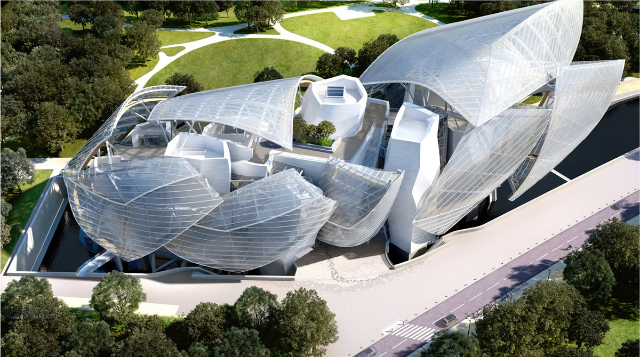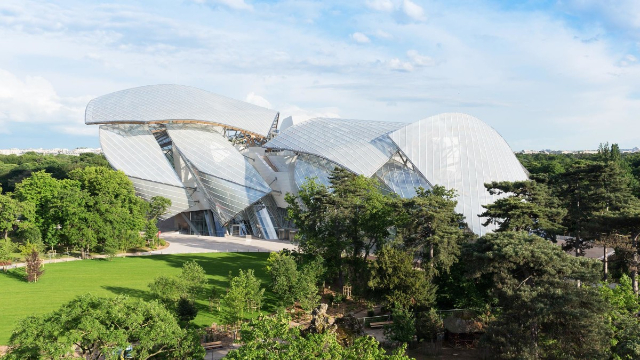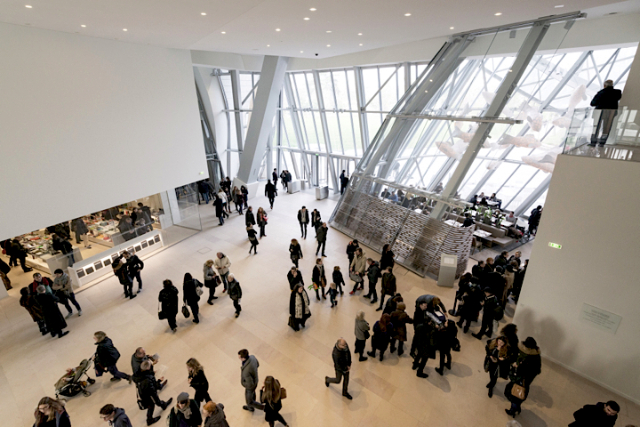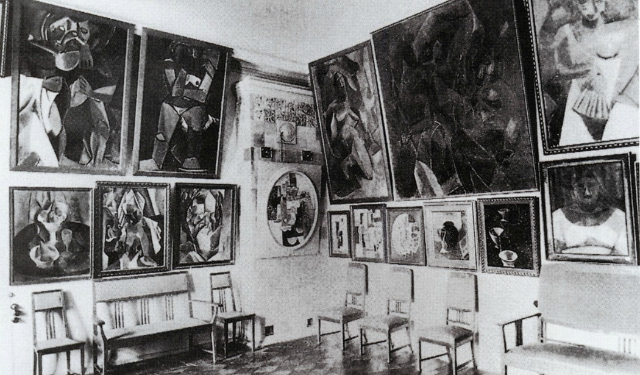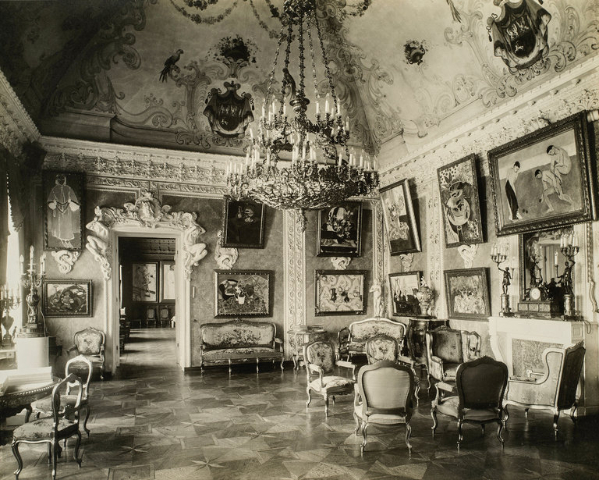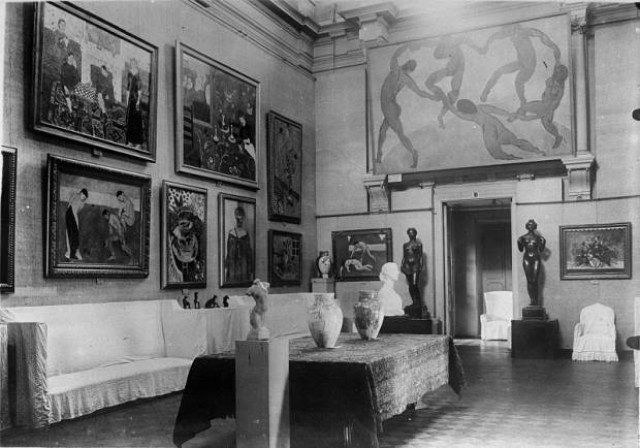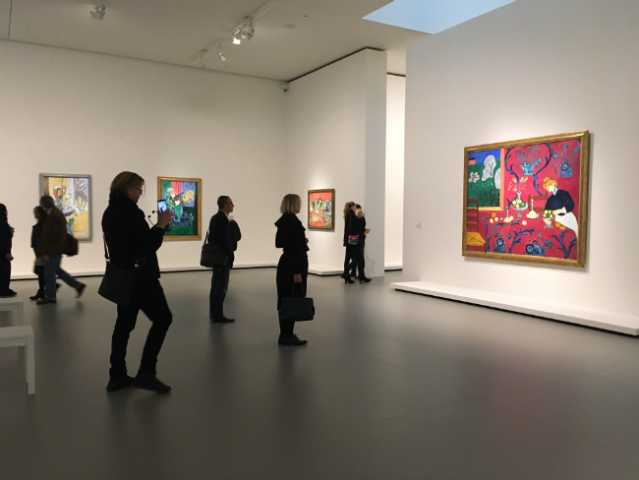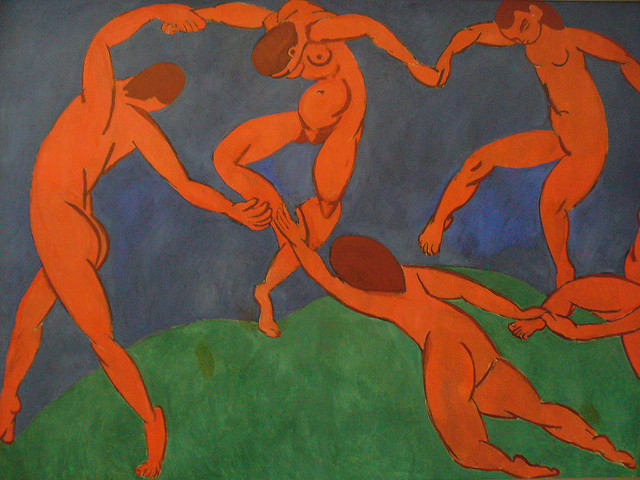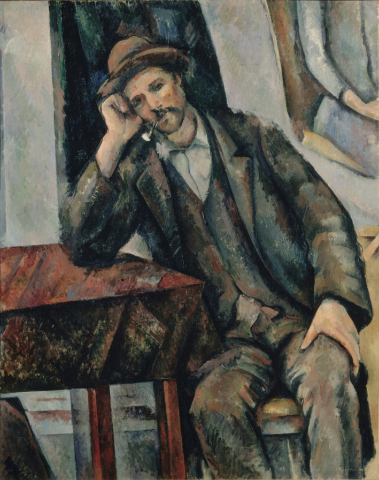Spectacular Modernist Shchukin Collection
Fondation Louis Vuitton, Paris
By: Ellen O’Donnell Rankin - Dec 26, 2016
Shchukin Collection
Fondation Louis Vuitton, Paris
October 22, 2016 – February 20, 201
The Fondation Louis Vuitton is hosting ‘Icons of Modern Art, The Shchukin Collection’. Monet, Matisse, Picasso, Malevich, Van Gogh, Cezanne and more, they are all featured prominently with some of the best examples by the artists’ works.
Sergei Ivanovich Shchukin (Chtchoukkin) 1854 -1936, was born in Moscow to a wealthy textile merchant family. He studied abroad, and after graduating from university traveled extensively with his father, learning the business.That often brought him to Paris, where he caught the collecting bug.
Visiting galleries and artist’s studios was how he spent his free time. At first acquiring a few paintings, then proceeding with a fury, collecting became an obsession. His intention was not just to amass a great collection of art but to introduce his Russian compatriots to the avant-garde artistic movements of Europe.
Between 1897 and 1914, Shchukin acquired 275 masterpieces, including 41 Matisses, 50 Picassos, 8 Cézannes, 13 Monets, 16 Gauguins, as well as works by his fellow Russian artists Malevich and Rodchenko.
The visionary collector was first drawn to Romanticism, then despite his own reservations, started collecting the bold modernist works he saw in Paris. Captivated by the vibrant colors and forms in Matisse’s paintings and exotic figurative works by Gauguin, Shchukin believed, “If a picture gives you psychological shock, buy it, it’s a good one.”
Shchukin viewed the works in his collection as objects of contemplation. He had such reverence for the paintings he presented them as objects of devotion like the venerated Icons of Russian art. Often he would lock himself away with a new acquisition until he felt he truly understood the painting and the artist’s intentions. Shchukin eventually opened his Moscow home, the Trubetsky Palace, to the intelligentsia, students and artists and conducted tours. It was always his intention to share his treasures and not hoard them for his personal pleasure.
Why collectors collect and what they collect has always been an intriguing question. With today’s interest in acquisition and investment return, it’s refreshing to view such a vast collection of paintings acquired for the sole purpose of a passion for the new and different. Shchukin also developed relationships with artists and trusted their guidance while often discounting the rhetoric of the art critics.
Such an exhibition would not have been possible without Bernard Arnault, chairman and C.E.O. of LVMH (Louis Vuitton Moet Hennessey). In 2006, at the behest of Arnault, the LVMH group created the Foundation Louis Vuitton, with the objective to build an art museum and cultural center. In August of 2014, the spectacular Frank Gehry designed art center, opened in the Bois de Boulogne in Paris.
When Arnault learned of the Shchukin collection he lobbied for it to come to Paris and be featured in the spectacularly designed building. Considerable lobbying and jockeying for the collection was played out between the politicos of France, Francois Holland, and Russia, Vladimir Putin. The exhibition is part of the official program of the France-Russia year of cultural tourism 2016-2017. The cost of transporting and insuring the collection was beyond the reach of any government, so Bernard Arnault, the richest man in France, stepped up to foot the bill.
That hurdle seems minor compared to the situation in Russia in 1917. After years of assembling his collection Shchukin had the pleasure of living with it in his Trubetskoy Palace in Moscow. It was not unusual for pre-revolutionary oligarchs to collect art, although it was not typical to visit the salons and galleries of Paris, searching for works by the French avant-garde. Shchukin lead the way, often purchasing multiple works by the same artist and sometimes, as with Matisse, eventually inviting the artist to Moscow to help install his paintings.
Eventually, however, with the advent of the Russian Revolution playing out and Lenin at the helm, Shchukin’s home, the Trubeskoy Palace and its contents were seized by the State. The collection became nationalized and scattered to the winds. Most ended up in the cellars of the Hermitage in Saint Petersberg, others in the Pushkin Museum in Moscow, however some were destined for the tundra of Siberia.
In 1918 shortly before his collection was seized, Shchukin and the remainder of his family fled to Paris, not only to escape the turmoil of the revolution, but also the many tragedies that had befallen them. In 1905 his 17 year old son Seryozha died and was believed to have drowned himself; Shchukin’s wife Lydia died in 1907 after a short illness; a year later his brother Ivan poisoned himself; and his second son Grigory shot himself in 1910. Shchukin remained in Paris under strained circumstances, until his death in 1936.
After his death his collection still remained scattered throughout Russia, yet to face another obstacle, Stalin’s cultural policy. In 1948 under the Stalin regime works by the modernist artists represented in the Shchukin collection were deemed ‘degenerate.' It wasn’t until the early 1960s, almost a decade after Stalin’s death, that the Hermitage and Pushkin museums brought paintings from the Shchukin collection up from their basements and began displaying them. Although Shchukin always had intended to gift his collection to the State, he never anticipated seizure would be the means by which they would be acquired.
So after decades of the Shchukin collection being sequestered away, and the generosity of the Foundation Louis Vuitton, we have the rare opportunity to view some of the most spectacular paintings by the great modern masters Gauguin, Matisse, Picasso, Cezanne, Derain, Rousseau and more.
Anne Baldassari, the former director of the Musee Picasso, has done a brilliant job selecting the 127 paintings of the 275 acquired by Sergei Shchukin. On four floors and throughout a dozen galleries we walk through an amazing array of ‘Icons of Modern Art’. One gallery is dedicated to portraits and self-portraits by Van Gogh, Picasso, Cezanne, and Derain. Cezanne, considered the father of modernity, his self-portrait confronts and challenges those of the younger rebel artists. Each portrait staring at one another, staring at the viewers, all eyes on you.
Another gallery is dedicated to the landscapes of Monet. Shchukin was fond of landscape paintings, particularly Monet’s. He came to know Monet well and collected thirteen of his works, eight of which are featured in the exhibition.
Most astounding of all, are the number and magnificence of works by Gauguin and Matisse. Gauguin’s Tahitian paintings, the beastly Fauves and Monet’s Moroccan and tapestry paintings are all well represented. Paintings most have only had the occasion to view in art history books are here before our eyes, we are in awe.
This exhibition is definitely a blockbuster, however it is more than that. The intriguing history of this collection, Shchukin’s life in Moscow and after the revolution and the extraordinary assemblage and presentation of this art, tells a compelling story. A story that has been hidden away and now brought to the forefront for us all to explore.
The Foundation Louis Vuitton’s, Frank Gehry building and the Shchukin Collection, ‘Icons of Modern Art’ are both independently and in tandem a reason to visit Paris. Purchase your tickets before arriving in Paris at www.foundationlouisvuitton.fr/. A catalogue of the exhibition is also available in English and French. When visiting the exhibition in November both catalogues were sold out, however additional printings are in the works.

